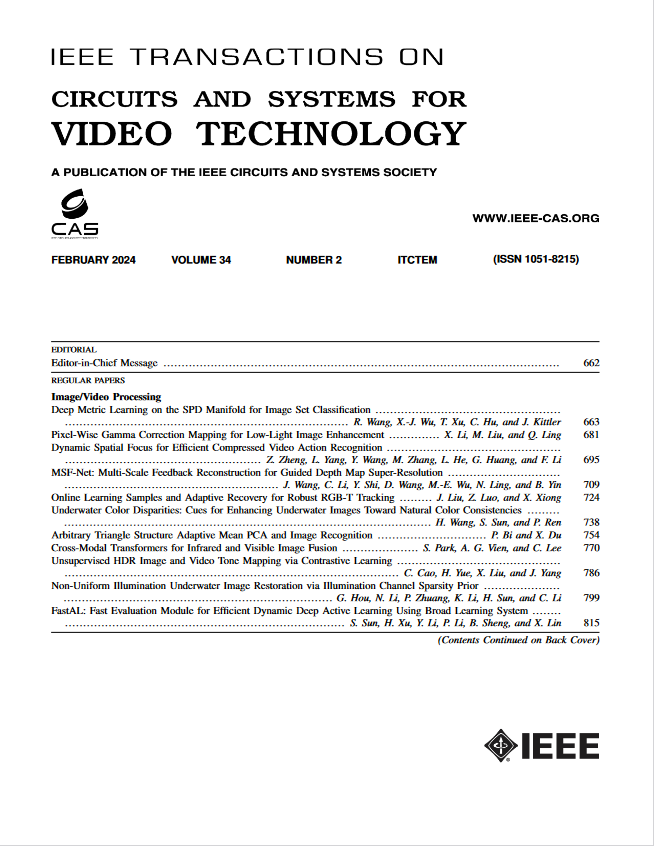用于人体运动预测的统一特权知识提炼框架
IF 8.3
1区 工程技术
Q1 ENGINEERING, ELECTRICAL & ELECTRONIC
IEEE Transactions on Circuits and Systems for Video Technology
Pub Date : 2024-08-08
DOI:10.1109/TCSVT.2024.3440488
引用次数: 0
摘要
先前关于人类运动预测的工作遵循的模式是在观察到的序列和待预测的序列之间建立外推映射。然而,时间序列外推的固有困难和人体运动数据的复杂性仍然导致了许多失败的案例。在本文中,我们探索了一个更长的序列视界,后面跟着更多的姿态,这打破了外推问题中预测目标另一侧的数据/信息完全未知的限制。由于这些姿态无法用于测试,我们将它们视为特权序列,并提出了一个两阶段特权知识蒸馏框架,该框架将特权信息纳入预测过程,同时避免直接使用它。具体来说,在第一阶段,观察序列和特权序列都被编码用于插值,特权序列编码器(Priv-Encoder)同时学习特权知识(PK)。然后,在特权序列不可观察的第二阶段,一种新的PK-模拟器通过近似privi - encoder的行为来提取PK,但仅将观察到的序列作为输入,以实现PK感知的预测模式。此外,我们还提出了该框架的单阶段版本,使用共享编码器将插值和预测分支的观测编码集成在一起,实现并行训练,从而产生最有利于预测管道的PK。实验结果表明,我们的框架是模型无关的,可以应用于现有的具有编码器-解码器结构的运动预测模型,以提高性能。本文章由计算机程序翻译,如有差异,请以英文原文为准。
Unified Privileged Knowledge Distillation Framework for Human Motion Prediction
Previous works on human motion prediction follow the pattern of building an extrapolation mapping between the sequence observed and the one to be predicted. However, the inherent difficulty of time-series extrapolation and complexity of human motion data still result in many failure cases. In this paper, we explore a longer horizon of sequence with more poses following behind, which breaks the limit in extrapolation problems that data/information on the other side of the predictive target is completely unknown. As these poses are unavailable for testing, we regard them as a privileged sequence, and propose a Two-stage Privileged Knowledge Distillation framework that incorporates privileged information in the forecasting process while avoiding direct use of it. Specifically, in the first stage, both the observed and privileged sequence are encoded for interpolation, with Privileged-sequence-Encoder (Priv-Encoder) learning privileged knowledge (PK) simultaneously. Then, in the second stage where privileged sequence is not observable, a novel PK-Simulator distills PK by approximating the behavior of Priv-Encoder, but only taking as input the observed sequence, to enable a PK-aware prediction pattern. Moreover, we present a One-stage version of this framework, using Shared Encoder that integrates the observation encoding in both interpolation and prediction branches to realize parallel training, which helps produce the most conducive PK to prediction pipeline. Experimental results show that our frameworks are model-agnostic, and can be applied to existing motion prediction models with encoder-decoder architecture to achieve improved performance.
求助全文
通过发布文献求助,成功后即可免费获取论文全文。
去求助
来源期刊
CiteScore
13.80
自引率
27.40%
发文量
660
审稿时长
5 months
期刊介绍:
The IEEE Transactions on Circuits and Systems for Video Technology (TCSVT) is dedicated to covering all aspects of video technologies from a circuits and systems perspective. We encourage submissions of general, theoretical, and application-oriented papers related to image and video acquisition, representation, presentation, and display. Additionally, we welcome contributions in areas such as processing, filtering, and transforms; analysis and synthesis; learning and understanding; compression, transmission, communication, and networking; as well as storage, retrieval, indexing, and search. Furthermore, papers focusing on hardware and software design and implementation are highly valued. Join us in advancing the field of video technology through innovative research and insights.

 求助内容:
求助内容: 应助结果提醒方式:
应助结果提醒方式:


